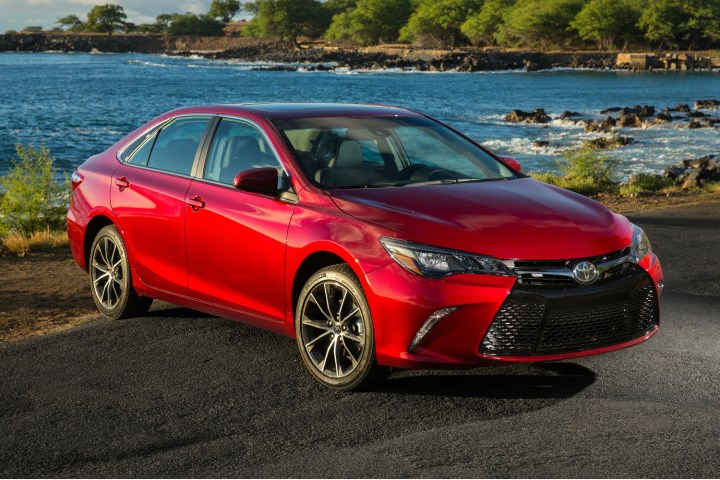
The XLE and XSE trims now come standard with the Entrune Audio Plus multimedia system with Connected Navigation App and JBL Audio. The XLE, XSE four cylinder, and XLE Hybrid also come standard with Qi Wireless Smartphone Charging. Despite more equipment, the MSRP on all Camrys is carried over from last year’s model line.
Available engines include a 2.5-liter four cylinder with 178 horsepower and a 3.5-liter V6 with 268 horsepower. The Camry Hybrid powertrain combines a 2.5-liter Atkinson cycle four-cylinder motor and a high-torque electric motor, producing a total of 200 horsepower.
The Camry Hybrid can switch between its gas and electric motors, or use both at the same time. It is expected to get 32 mpg in the city and 42 mpg on the highway. The standard four-cylinder is rated at 24 city and 33 highway, and the V6 should get 21 city and 30 highway.
Toyota sells more hybrid vehicles than any other manufacturer and has two decades of experience, going all the way back to the Prius. Regenerative braking converts the electric motor to a generator, capturing kinetic energy via the wheels and storing it in the hybrid battery pack.

The Camry Hybrid comes in both XLE luxury and SE sporty grades. It can accelerate from 0-60 mph in 7.6 seconds, placing it between the four-cylinder and V6 models.
On the safety side of things, Toyota’s Pre-Collision System with automatic emergency braking is available with the Technology Package, which also comes with Dynamic Cruise Control, Lane Departure Alert, and Auto High Beam. When thus equipped, the 2016 Camry earned a Top Safety Pick from the Insurance Institute for Highway Safety (IIHS).
The 2017 Camry offers Blind Spot Monitor with Rear Cross Traffic Alert on the XLE and XSE trims, and all Camry models come equipped with 10 airbags, for front and rear row passengers. Safety Connect comes with a free one-year subscription and also comes with collision notification, a stolen vehicle locator, and roadside assistance. Drivers can also request help through the Emergency Assist Button.
For 2017, all Toyota vehicles come standard with the STAR safety system, which includes Vehicle Stability Control (VSC), Traction Control (TRAC), Anti-lock Braking System (ABS), Electronic Brake-force Distribution (EBD) and Brake Assist.
MSRP for the base four-cylinder Camry LE is about $23,100, while the top-of-the-line XLE and XSE V6 come in close to $31,400. The HV LE Hybrid starts at $26,800, while the HV XLE goes for $30,100.
Editors' Recommendations
- 1More’s ColorBuds 2 boast way more features and a lower price
- With newly added AWD, Toyota’s Camry and Avalon are ready to battle winter
- Here’s why your Uber or Lyft car always seems to be a Toyota Camry


